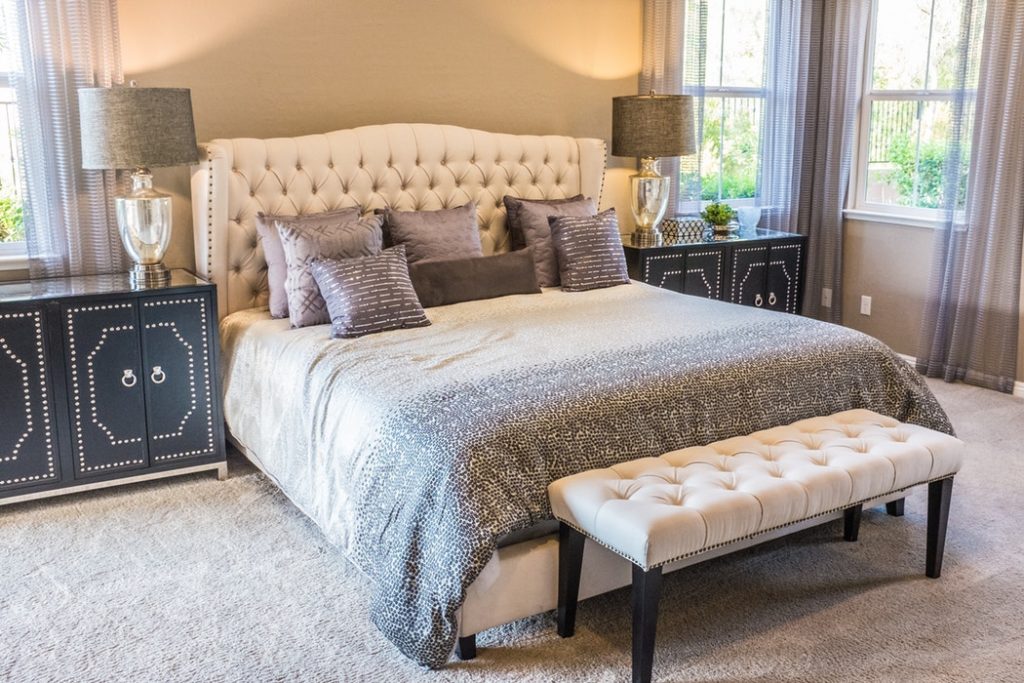If you’re a parent, you know the importance of seeking advice from other parents. Generally speaking, many non-parents don’t have a realistic view of what it’s like to raise a child. Many hold simplistic views of what it takes to correct a child’s behavior. It’s not their fault. They just haven’t experienced the futility of everyday things like trying to keep socks and shoes on scurrying little feet.
From a non-parent’s perspective, a three-year-old tossing a sock on the ground in the middle of the grocery store can seem like a simple opportunity for discipline: punish them and they won’t do it again. Once they have kids, they’ll understand the futility, and why so many parents let their kids run around barefoot, even in the grocery store.
The same holds true for hiring an interior designer to decorate your dream home. For example, if you’ve got young children who love to get behind the sofa or recliner, you can’t hide cords back there. Decorating that area of your home will be limited to cordless lighting, or the cords will need to be tacked along the baseboards, up the wall, or under the carpet. An interior designer without kids might think you should be able to control where your kids play. They won’t understand that no matter how well you discipline your kids, they will still get behind the sofa and chair.
Searching for an interior designer to beautify your home and create an inviting environment is a process. It’s important to find an interior designer who gets your vision, your taste in décor, and understands your needs as a parent.
- An interior designer with kids will be living in the real world
People with kids understand that how things “should be” doesn’t apply. Kids shouldn’t run through the house, just like cats shouldn’t climb drapes, but both will happen regardless of established consequences.
Children have the highest risk for home injury and accidents. Each year, more than 3.4 million kids are unintentionally injured in the home, and over 2,300 children under 15 die from their injuries. You shouldn’t need to convince a designer of this risk. Another parent will take your concerns for safety seriously.
An interior decorator with kids won’t bat an eye at your request that all potential safety hazards need to be eliminated. They won’t call your parenting capabilities into question. They’ll just do their job.
- Parents silently get each other
Parents understand each other on a level that often requires no words. When you bring your toddler to a friend’s house with a stained t-shirt, another parent wouldn’t bat an eye. Someone without kids might wonder why you didn’t dress them in clean clothes before coming over.
If you ask an interior designer with children to avoid certain styles or do things a little differently because you have kids, they won’t have to ask for an explanation. They’ll just get it.
- They naturally think about things non-parents don’t
An interior designer with children will come to you armed with unique experiences that arose from being a parent. You probably won’t need to remind them of the need to install childproof doorknobs, and they might already be thinking about ways to modify their designs to meet your needs. For example, if you want indoor plants, they might already have a solution to make them childproof by placing a section of burlap sack over the soil. You can still water the plant through the burlap, but your kids can’t dig around in the soil and get it all over the carpet and house.
- You’ll have something in common to connect over
You’re going to spend a lot of time with your interior designer. Connecting with another parent can give you something in common to talk about. Everyone prefers to connect with people they can relate to. Parents tend to connect better with other parents, especially when they don’t share anything else in common.
You deserve a designer who listens
The right interior designer will understand your requests that center on child safety. They won’t tell you to do a better job parenting your kids to avoid altering their design ideas. They’ll listen to your ideas and concerns and find a way to make it work.
